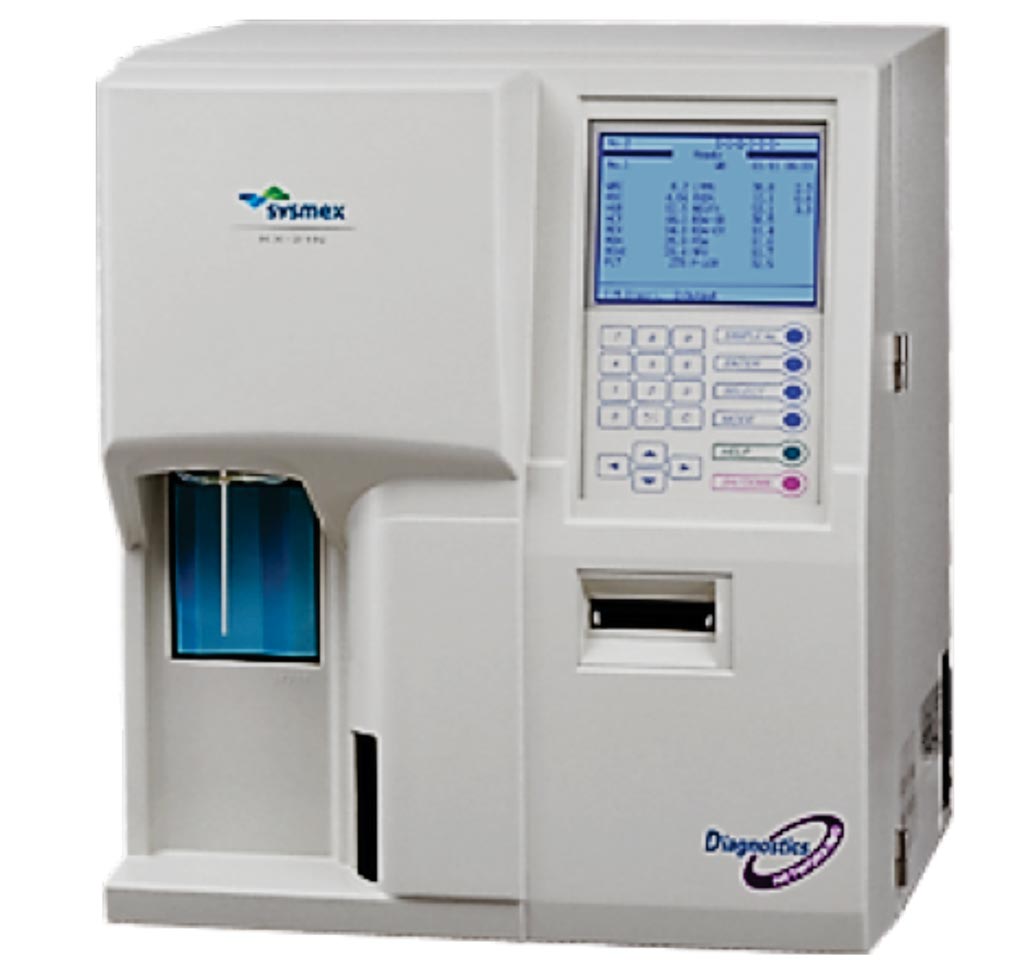Biomarkers of Sickle Cell and Hemoglobin SC Compared
By LabMedica International staff writers
Posted on 10 Oct 2017
Sickle cell disease (SCD) is a group of inherited diseases that includes sickle cell anemia (SCA), which is the homozygous state of the beta S (βS) allele and the most severe SCD genotype. The heterozygous state of the βS allele is characterized by the presence of hemoglobin S (HbS) and is associated with a group of less severe SCD, including hemoglobin SC disease (HbSC).Posted on 10 Oct 2017
Considering the wide range of variability in the severity of SCA and HbSC individuals, laboratory biomarkers associated to hemolysis such as reticulocyte count and serum lactate dehydrogenase (LDH), in addition to biomarkers of blood viscosity such as hemoglobin and hematocrit concentration are important.

Image: The KX-21 N automated hematology analyzer (Photo courtesy of Sysmex Corporation).
Medical scientists at the Federal University of Bahia (Salvador, Brazil) and their colleagues conducted a cross-sectional study from 2013 to 2014 in 200 SCD individuals (141 with SCA; 59 with HbSC) and analyzed demographic data to characterize the study population. They determined the association of hematological, biochemical and genetic markers including the βS-globin gene haplotypes and the 3.7 Kb deletion of α-thalassemia (−α3.7Kb-thal), as well as the occurrence of clinical events in both SCD genotypes.
Hematological analyses were carried out using Sysmex KX-21 N Automated Hematology Analyzer. Serum lipids and lipoproteins were analyzed using fully automated equipment. Hemoglobin profiles and HbF concentration were determined using High Performance Liquid Chromatography. Genomic DNA was extracted from leukocytes and investigated using polymerase chain reactions.
The team found that the laboratory parameters showed a hemolytic profile associated with endothelial dysfunction in SCA individuals; however, the HbSC genotype was more associated with increased blood viscosity and inflammatory conditions. The Benin (BEN) haplotype was the most frequently observed and was associated with elevated fetal hemoglobin (HbF) and low S hemoglobin (HbS). The -α3.7Kb-thal prevalence was 0.09 (9%), and it was associated with elevated hemoglobin and hematocrit concentrations. Clinical events were more frequent in SCA patients.
The authors concluded that their data highlight the differences between sub-phenotypes among SCA and HbSC patients, based on laboratory characterization, genetic profiles and clinical manifestations of both genotypes. The results of their analyses emphasize the need for specialized care services for SCA and HbSC patients, particularly because of their heterogeneous genetic, clinical and pathophysiological backgrounds, and indicate the need for public health policies that significantly improve the health of these patients. The study was published on September 15, 2017, in the journal BMC Hematology.
Related Links:
Federal University of Bahia














